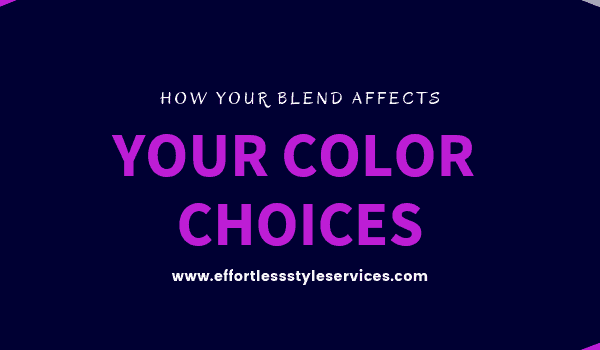
The best way to determine if you have a seasonal blend is to get
The 4 Absolute Seasons
There are 4 absolute seasons. Very few people are absolutes, most are blends of two or more seasons. The four absolutes are described as follows:
Spring- Warm blond hair and blue or green eyes.
Summer- Light ash brown hair and gray or pale blue eyes.
Autumn- Red hair and green or brown eyes.
Winter- Black hair and black/brown or clear blue eyes.
What if I don’t fit into one of those four?
How many of you are left out of this categorization? Probably a large number of you. We all have DNA for our coloring that is handed down from generation to generation. Maybe you get your eye color from your great- great grandma on your dad’s side, but your hair color is the same as your mom’s?
Finding your seasonal blend
If the tests place you in one season, but you give the impression of another, your impression is most likely your blend. Take me as an example, warm toned, but dark warm brown hair and dark brown eyes. The warmth puts me in the Autumn season, but the deep colors of my features place me near the Winter border. Take the strawberry blond, not an Autumn as some might think; the light delicateness and low contrast of the coloring makes this person a Spring.
Skin tone test
Other tests may also be performed prior to the draping to determine your skin undertone to narrow down the choices to either a warm season— spring or autumn; or a cool season— summer or winter. Many cosmetic companies name their foundations with either the cool or warm designation. If you are completely certain that your foundation matches perfectly, this is a good start. If you’re not so sure that your foundation is a perfect match, head down to your local Sephora. They, in conjunction with Pantone, offer a wonderful service called Color IQ.
Sephora uses a device to scan the color of your skin. They will then give you the Pantone color code of your skin tone. A code with an R in it is cool and a Y is warm. They will then be able to recommend a foundation in the correct shade as well as other color cosmetics that will suit your skin tone.
Hair and Eyes
Now that’s only half the picture. Now we’ll shift our focus from the skin tone to the hair and eyes. Generally speaking, summer and spring have less pigment than winter and autumn, but there are always exceptions. Another way of describing the seasons is this way: Spring is bright, Summer is soft Autumn is rich and Winter is deep. Take a look in the mirror and ask yourself which of these qualities fits you the best. Maybe there are two of them competing; this would indicate a strong blend. Over simplifying it like this will give you an idea of the category you most likely fall into, but the only way to know for sure is to get draped.
A Change in Thinking
At the beginning of seasonal analysis, those with naturally black hair were originally classified as being Winters, but that myth was debunked. My very first client is a naturally black haired Autumn that blends with summer. All four seasons can be found in all nationalities. Even though they all have black hair, some Asians, Africans and Hispanics are Autumns, Springs or Summers. There are even some blond winters.
Secondly, compare the natural hair color to the skin. If there is a low contrast between the two, you are more likely a Summer or a Spring. If there is high contrast, you are more likely an Autumn or Winter. The degree of contrast from low to high is Summer, Spring and Autumn with Winter having the most contrast.. There are so many intricacies. More can be uncovered about your seasonal blend by looking at your eyes, not just their overall color, but the flecks and rings within them.
I’d love to help you start the journey toward dressing in your absolute best colors. The ones that make your complexion radiant and your eyes sparkle. Take the first step and visit my services page to book your color consultation today or sign up for the FREE Color Course. I’m so excited to see the transformation!



